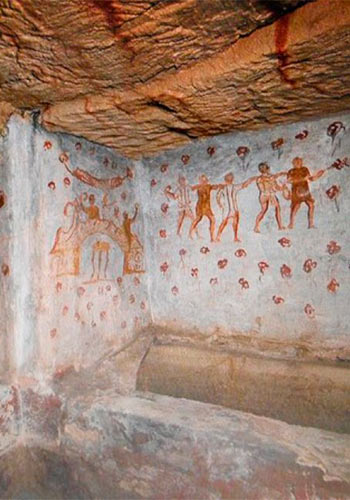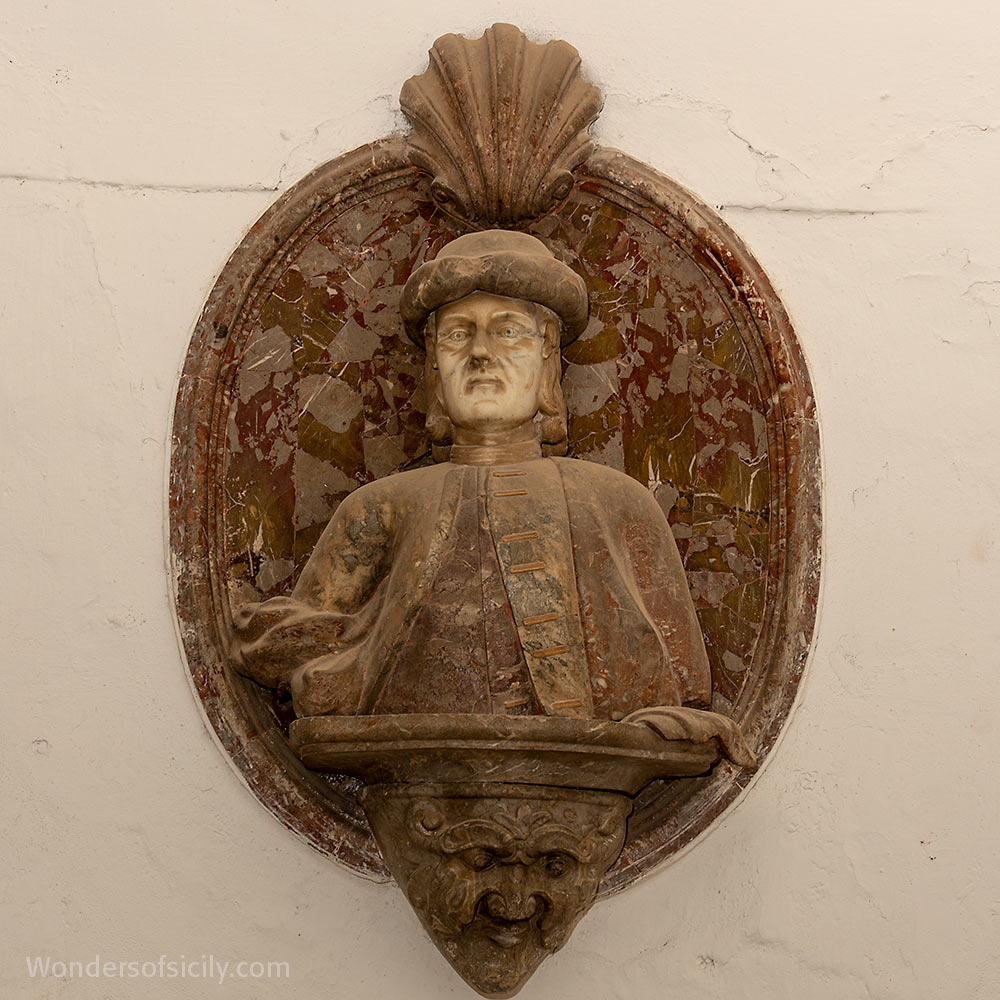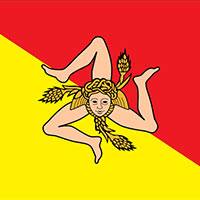Villa Palagonia (Bagheria) - The Villa of Monsters (Villa dei Mostri)
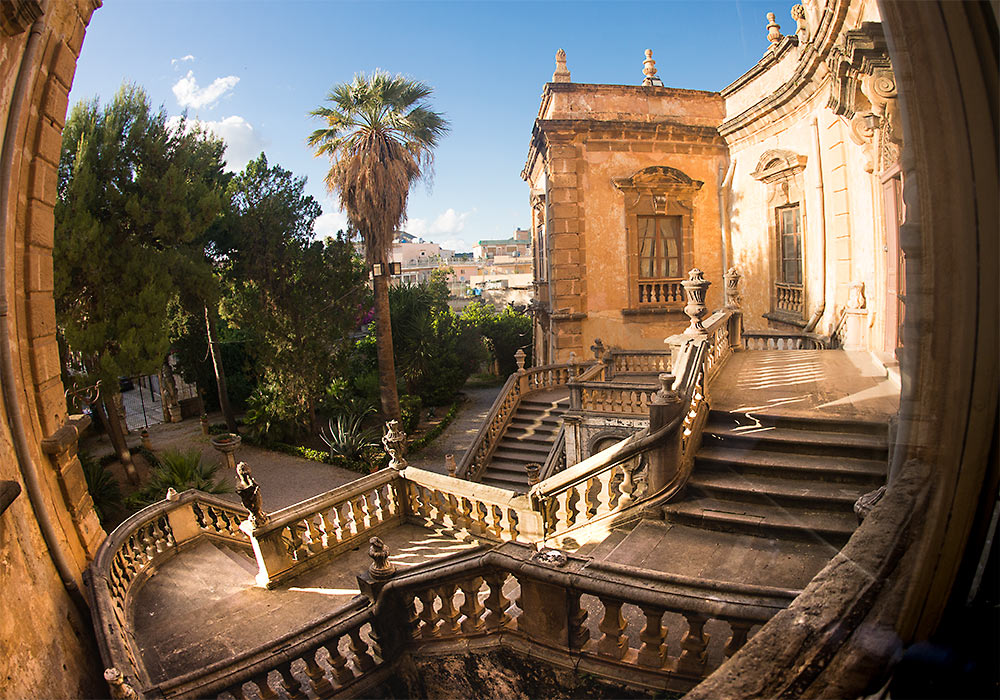
Villa Palagonia's wonderful double flight of stairs. The villa is a great example of the Sicilian baroque.
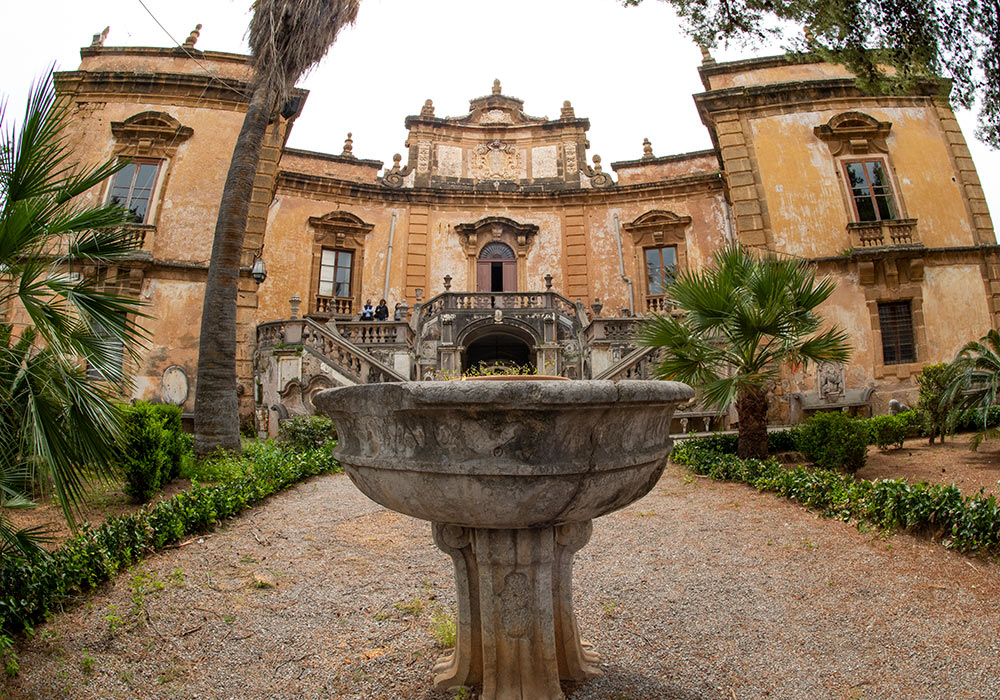
The villa seen from what was the main entrance in the 18th century.
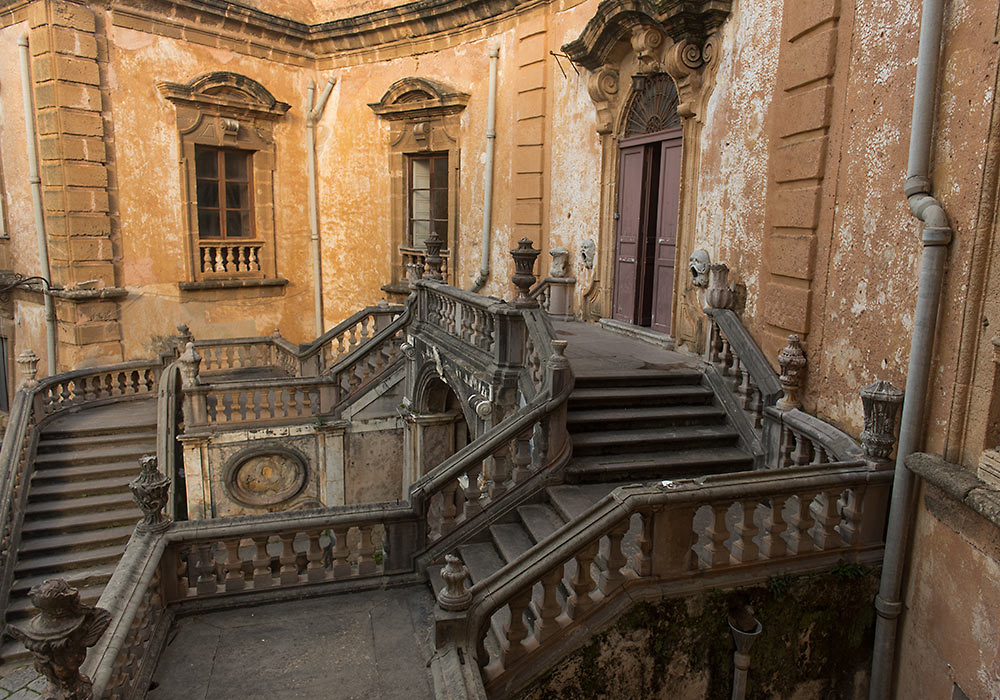
The baroque stairs from another angle.
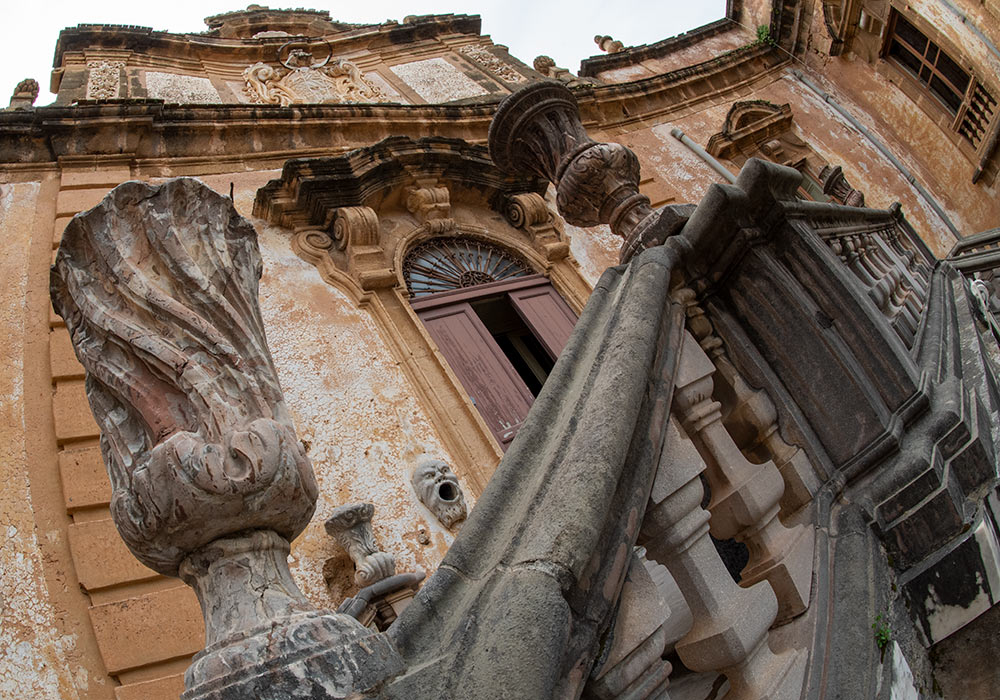
Villa Palagonia: Detail of the double flight of stairs and the entrance.
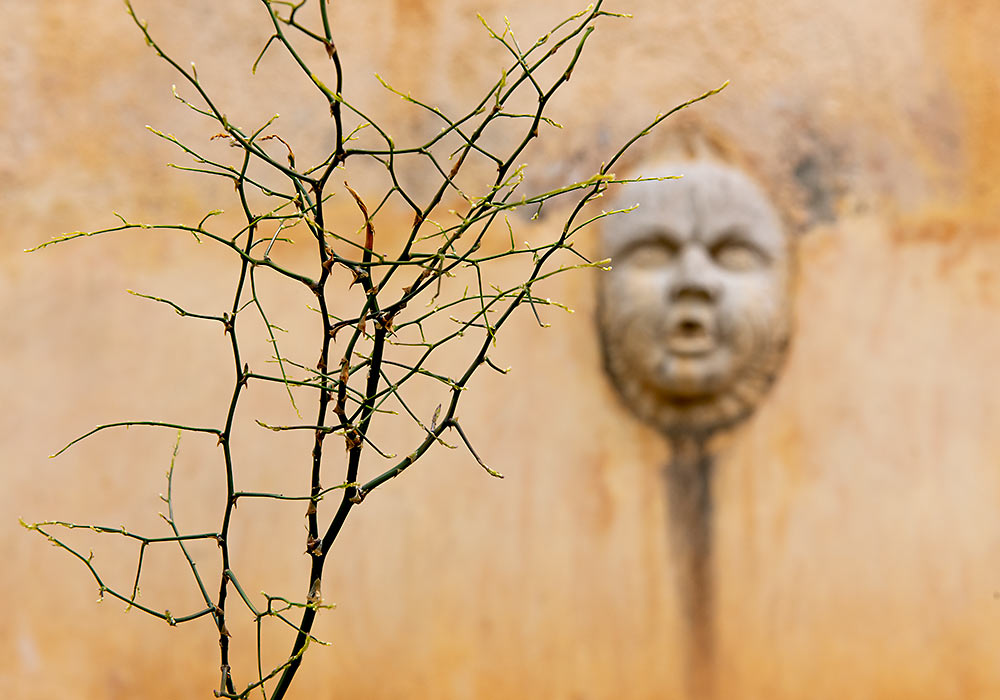
Relief in the wall.
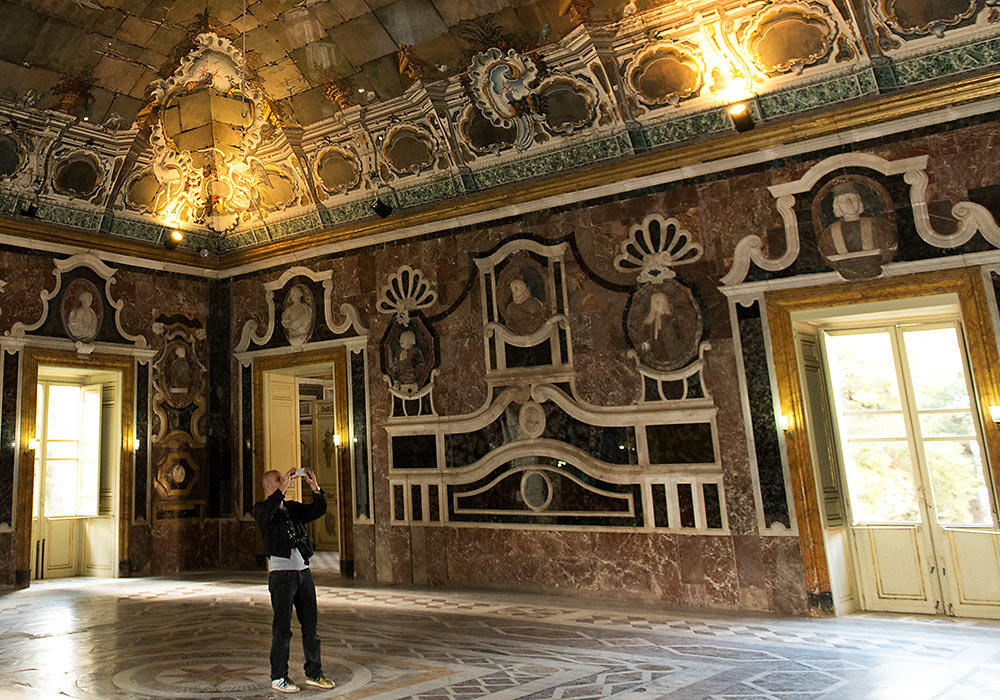
Hall of mirrors, Villa Palagonia, Bagheria.
The construction of Villa Palagonia - famous for the statues of "monsters" that decorate its garden and its wall - began in 1715. The architect was Tommaso Napoli (and Agatino Daidone), and the building is a fine example of the so called Sicilian baroque.
The grotesque statues were created from 1749 by Francesco Ferdinando II Gravina, Prince of Palagonia.
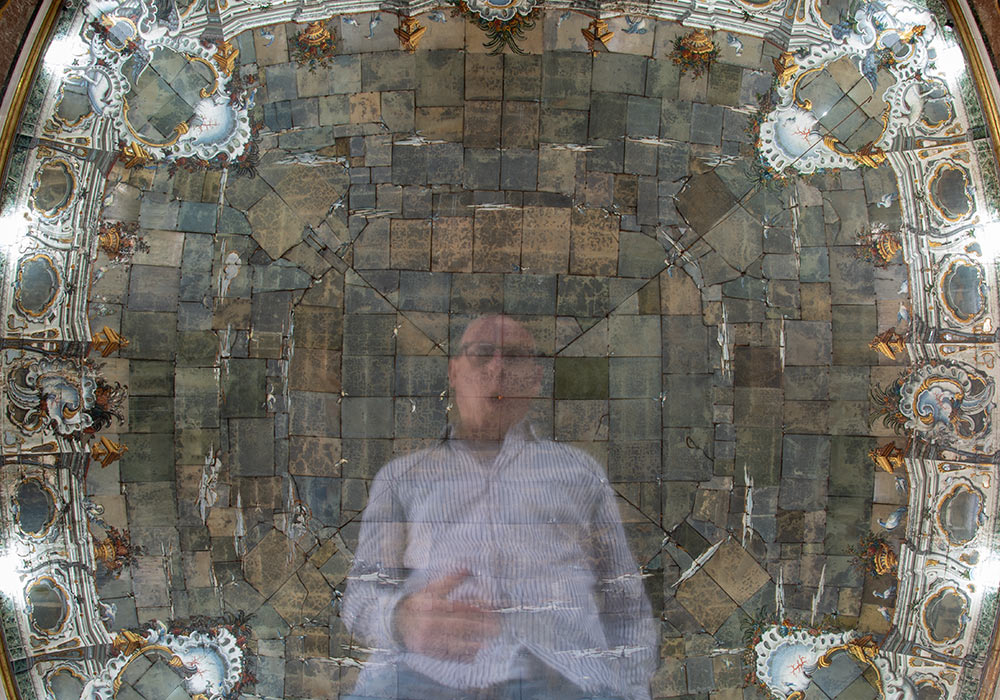
Patrick Brydone called it an "enchanted castle," in which some of the ceilings "instead of plaster or stucco, are composed entirely of large mirrors, nicely joined together. The effect that these produce (as each of them make a small angle with the other), is exactly that of a multiplying glass, so that when three or four people are walking below, there is always the appearance of three or four hundred walking above."
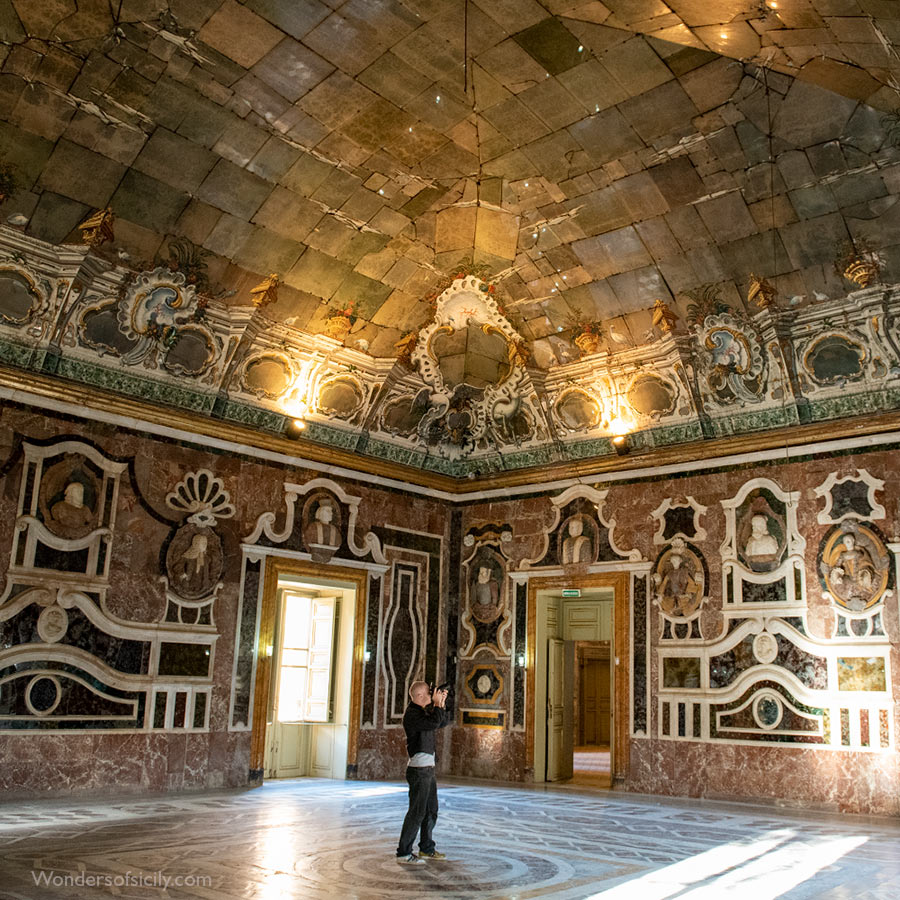
Hall of mirrors, Villa Palagonia, Bagheria.
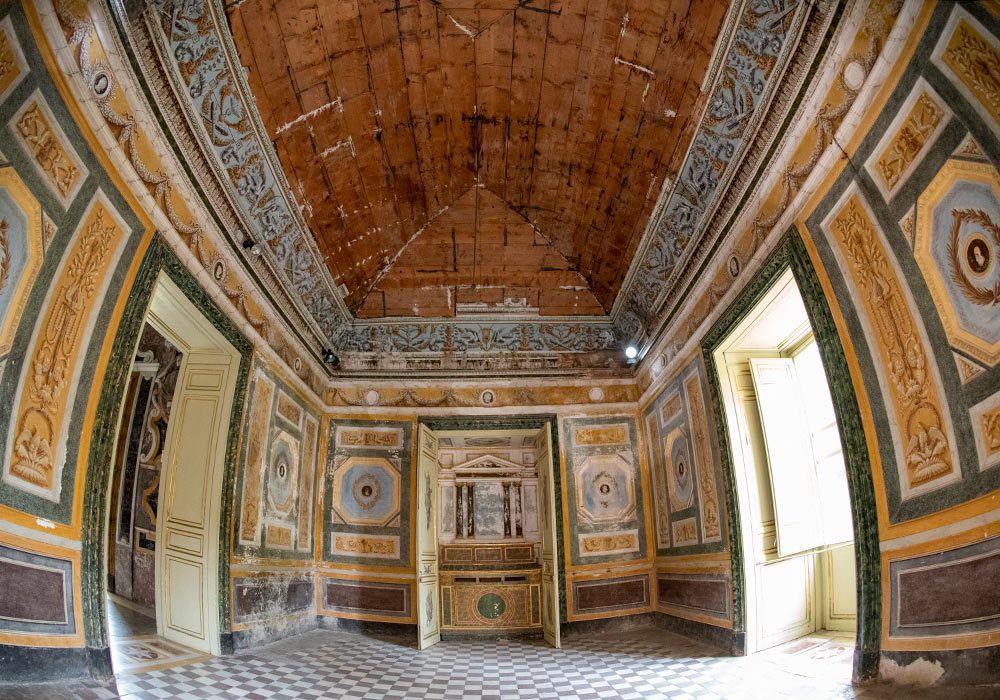
The Philosopher's Room, next to the Hall of Mirrors.
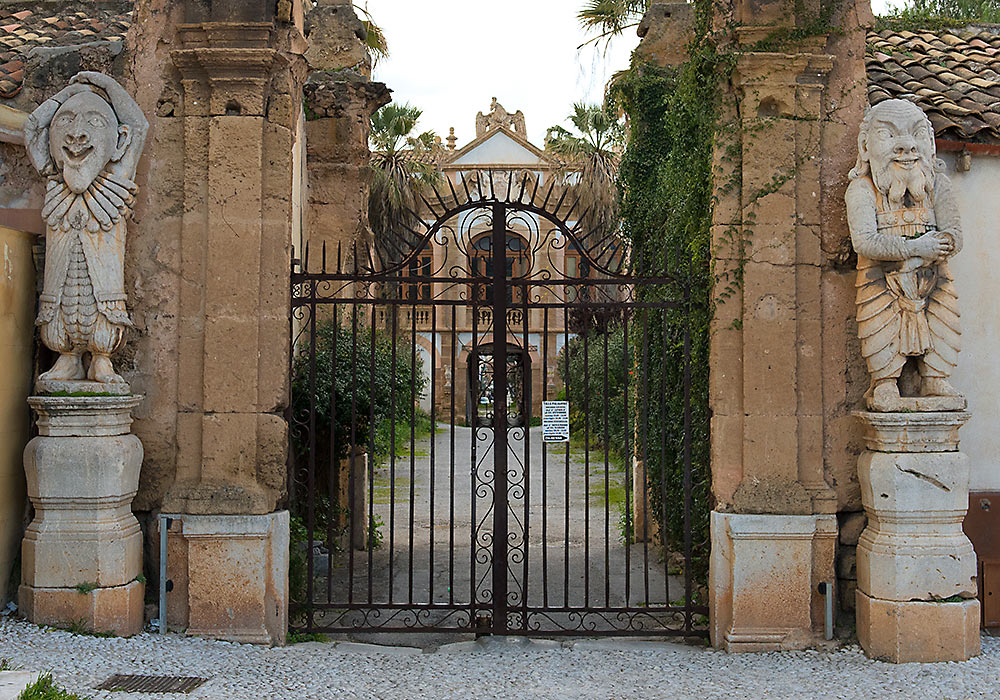
The main entrance for tourists is facing Piazza Garibaldi.
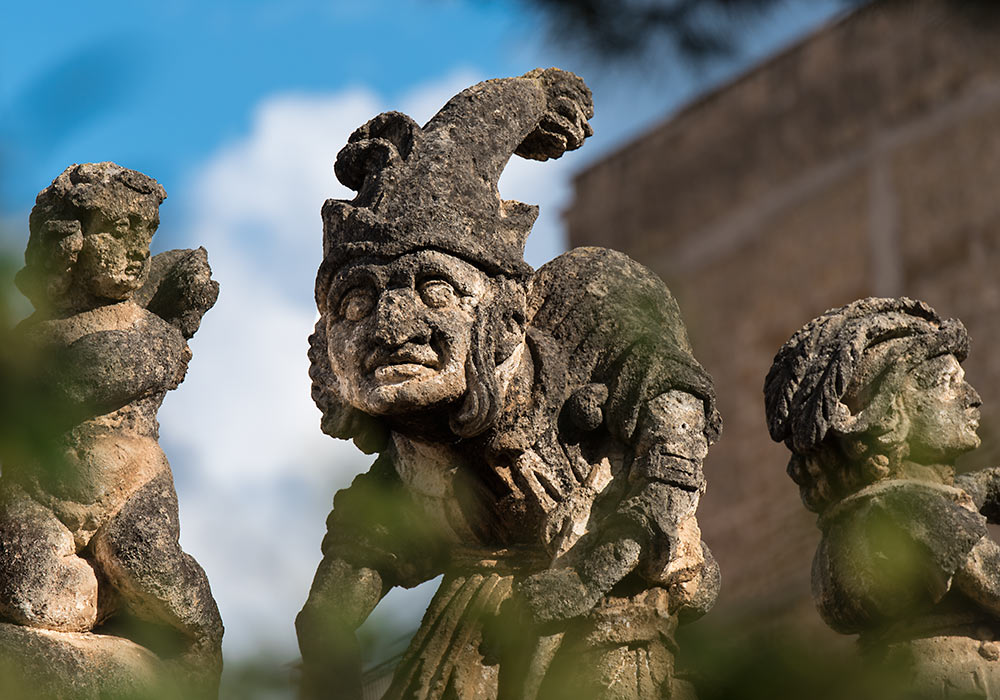
Three of the monsters on the wall. Villa Palagonia is known all over the world as "The Villa of Monsters" (Villa dei Mostri).
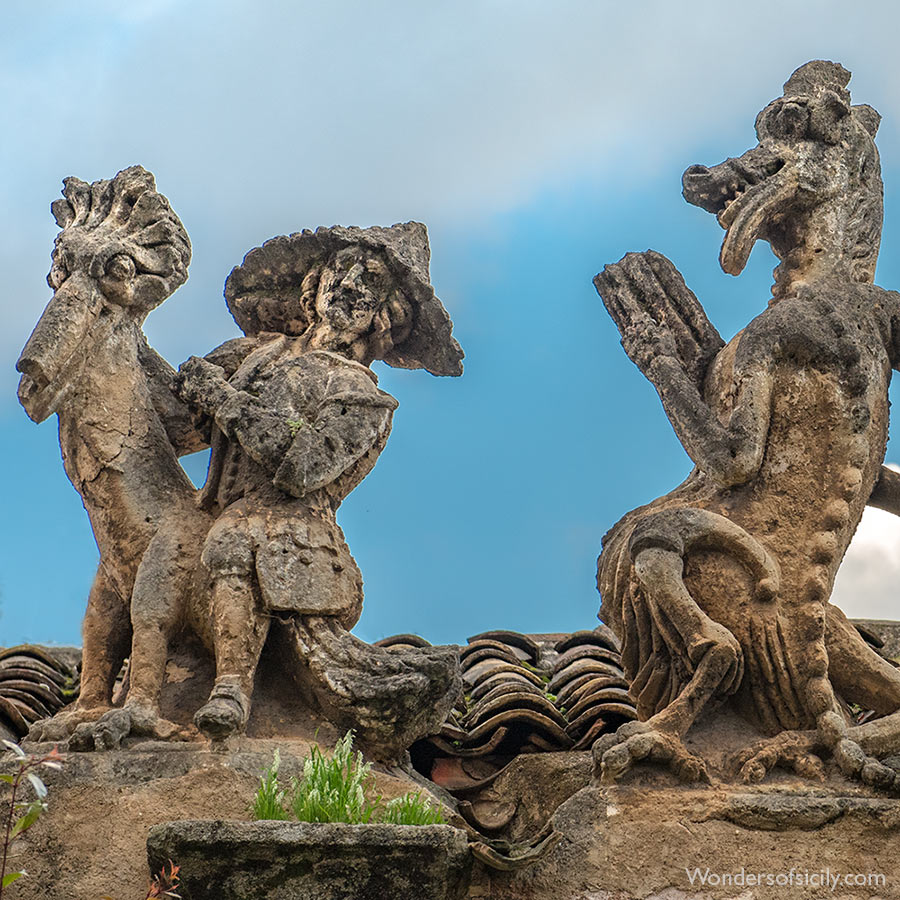
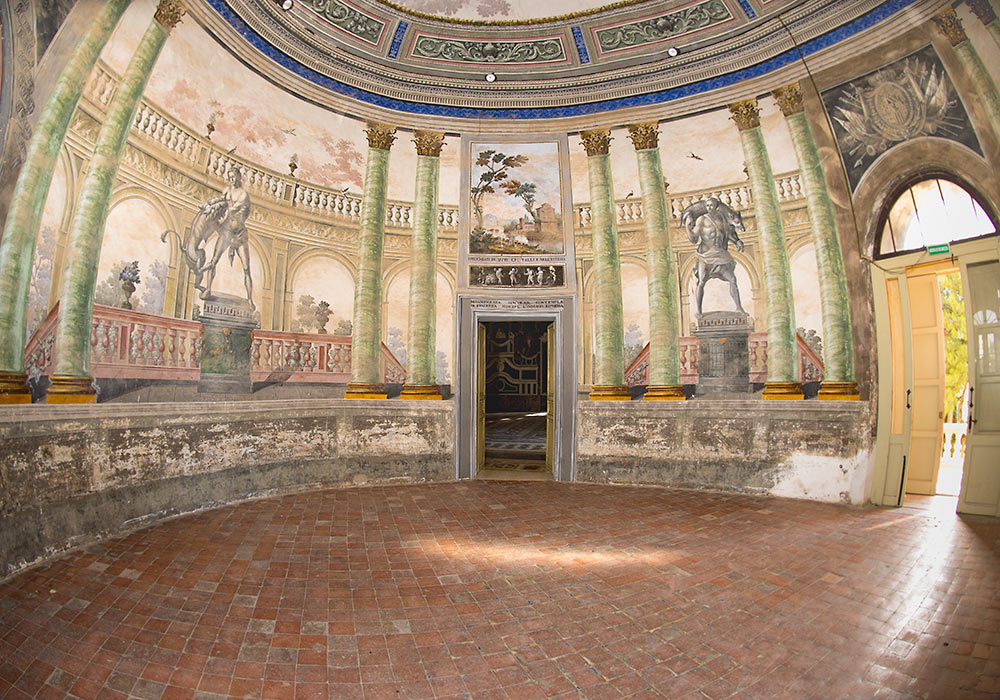
Villa Palagonia: The Hercules room.
Timeline
1715
The construction of Villa Palagonia begins. Architect Tommaso Napoli (and Agatino Daidone)
1749
Francesco Ferdinando II Gravina, Prince of Palagonia starts creating the grotesque statues
1770
Patrick Brydone (1736-1818) visits Villa Palagonia and describes it in his book A Tour through Sicily and Malta, in a Series of Letters to William Beckford, Esq., of Somerly in Suffolk (published in 1773). It was translated into French and German. In Italy, nine years after its publication, Count Borch published a volume of ‘Letters to serve as Supplement to the Voyage in Sicily and Malta of Mr. Brydone.'
1773
Patrick Brydone’s book A Tour through Sicily and Malta, in a Series of Letters to William Beckford, Esq., of Somerly in Suffolk is published.
1787
Johann Wolfgang von Goethe visits the villa during his Italian journey. 9 April 1787 he writes: "Our entire day has been taken up with the madness of the Prince of Pallagonia [sic]."
12 April 1787: Goethe sees the Prince of Palagonia in Palermo, who is collecting ransom money for the slaves who have been captured by Barbary pirates (“‘Dies ist der Prinz Pallagonia’, sagte der Händler, ‘welcher von Zeit zu Zeit durch die Stadt geht und für die in der Barbarei gefangenen Sklaven ein Lösegeld zusammenheischt.’”)
1885
Villa Palagonia is bought by private individuals
1950
Article about Villa Palagonia in Life Magazine (8 May, 1950)
1984
Jorge Luis Borges visits Sicily, including Villa Palagonia.
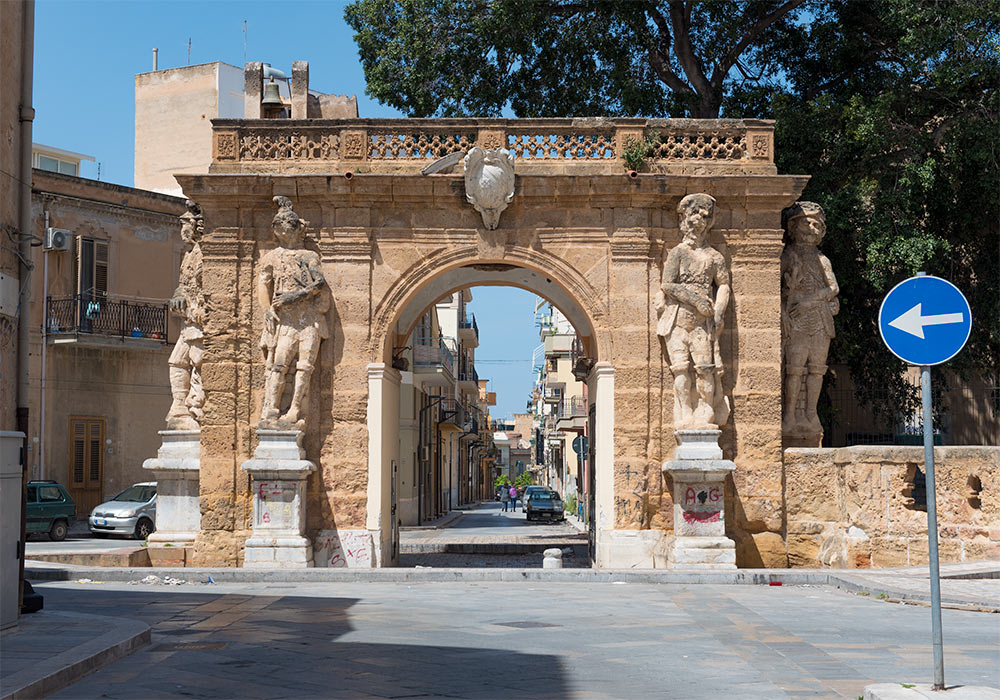
Arco del padreterno (God's Arch) was once the main entrance to the Palagonia estate. It is located at the end of Via Palagonia.
Villa Palagonia
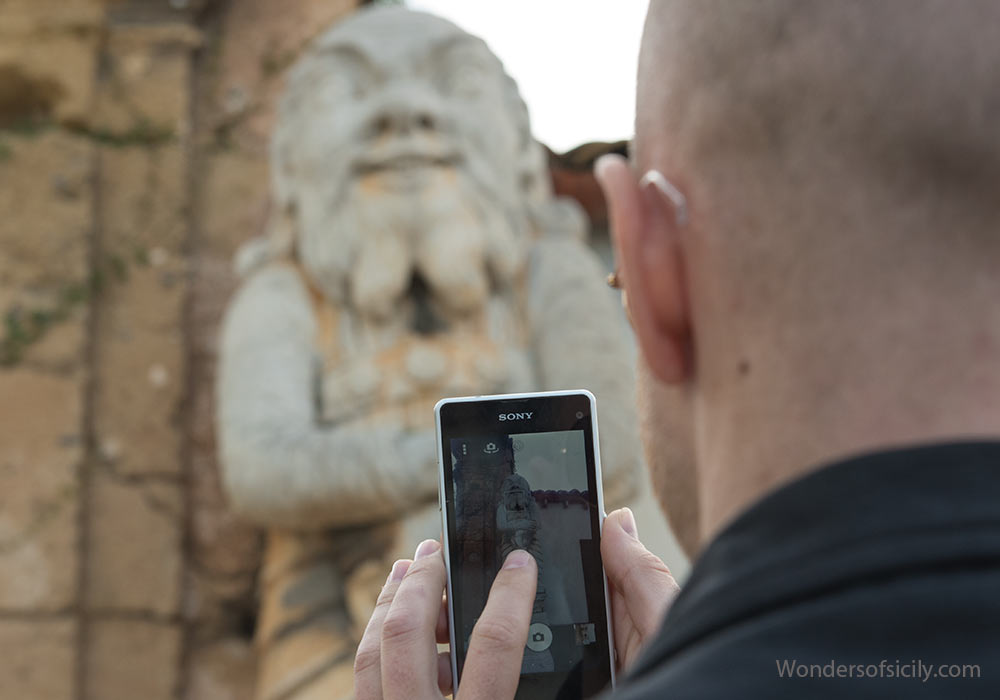
Villa Palagonia (Bagheria, Palermo).
Villa Palagonia
Many artists have been inspired by this eccentric villa, and many famous people have visited it. Here is a list of some:
- Johann Wolfgang von Goethe
- Alexandre Dumas
- Michelangelo Antonioni
- Renato Guttuso
- Jorge Francisco Isidoro Luis Borges
- André Breton
- Giovanni Macchia
- Dominique Fernandez
- Henry Swinburne
- Patrick Brydone
- John Soane, the Count de Borde, Jean-Pierre Houël
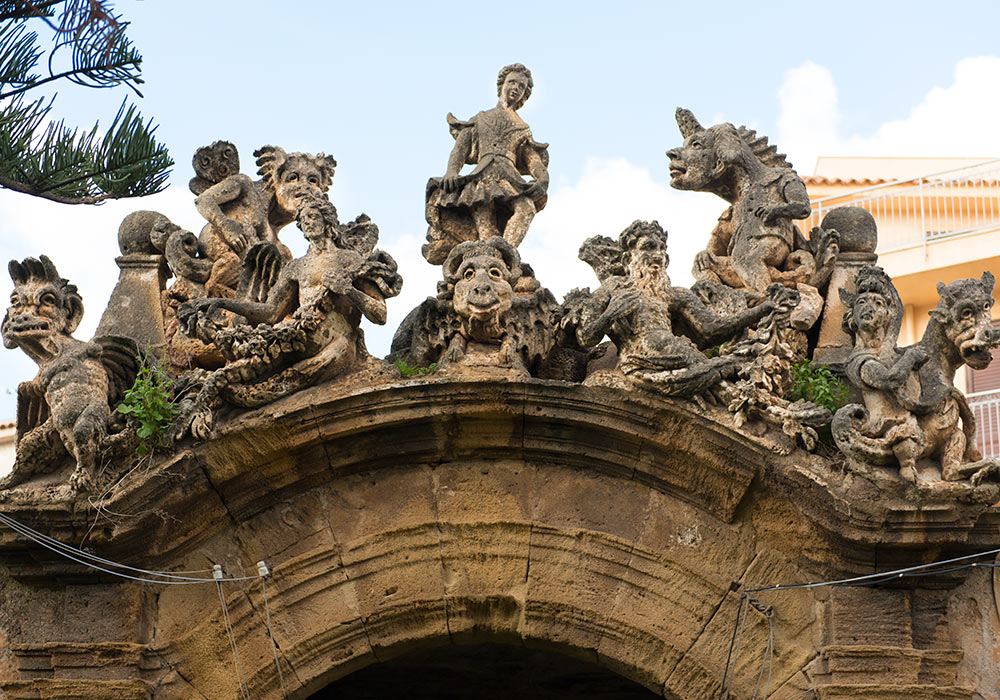
Some of the monsters on the wall that goes around the garden.
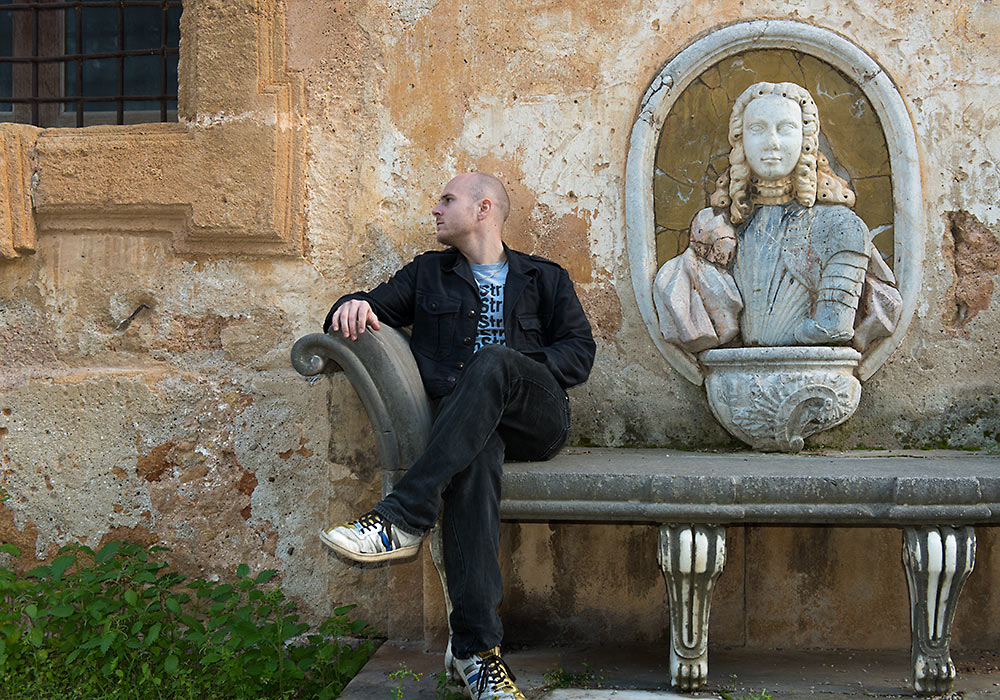
Relaxing in the garden.
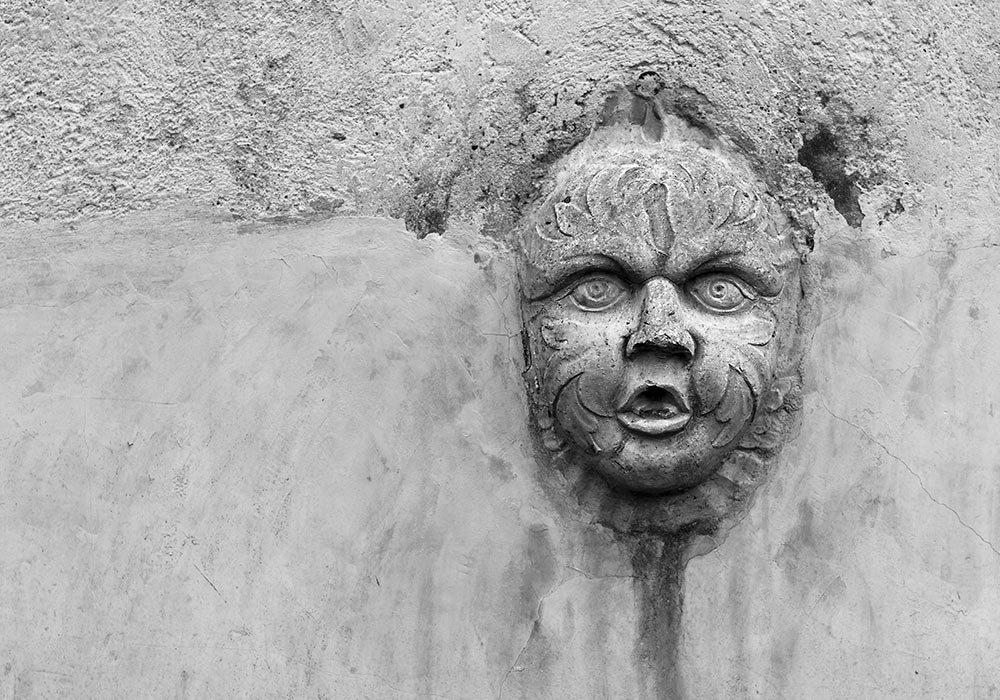
Relief in the garden wall at Villa Palagonia. The green man?
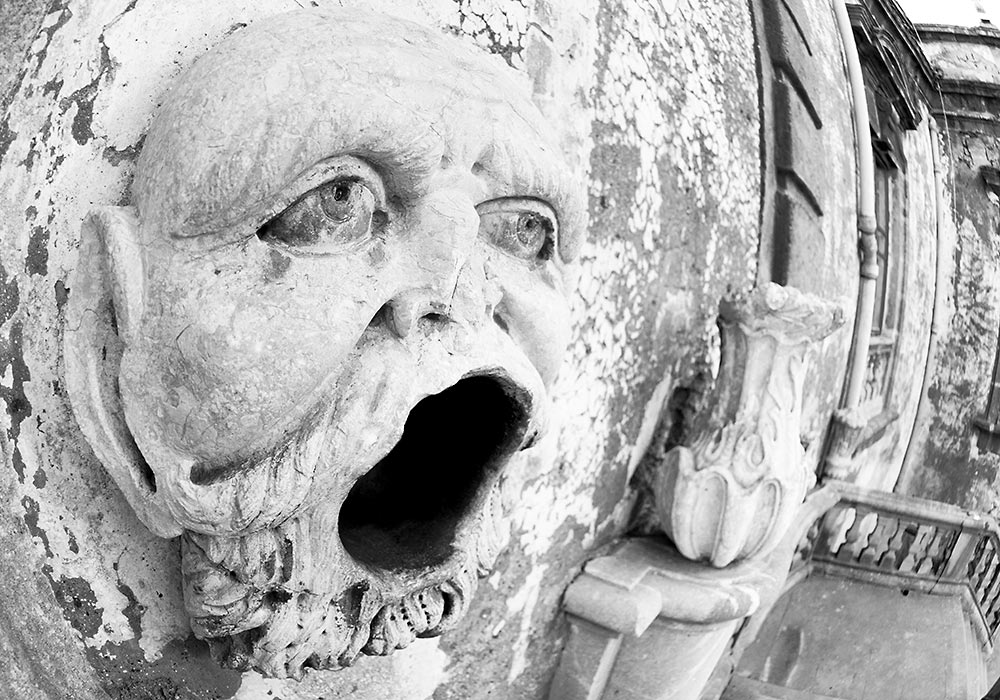
In my mouth you can leave your light.
Villa Palagonia appears in several films:
- L'Avventura (The Adventure, 1960), directed by Michelangelo Antonioni
- Baarìa, directed by Giuseppe Tornatore
- The Wedding Director (Il regista di matrimoni, 2006), directed by Marco Bellocchio, starring Sergio Castellitto, Donatella Finocchiaro, Sami Frey etc.
- See screenshots from films that have used Villa Palagonia as a location
- Film locations in Sicily
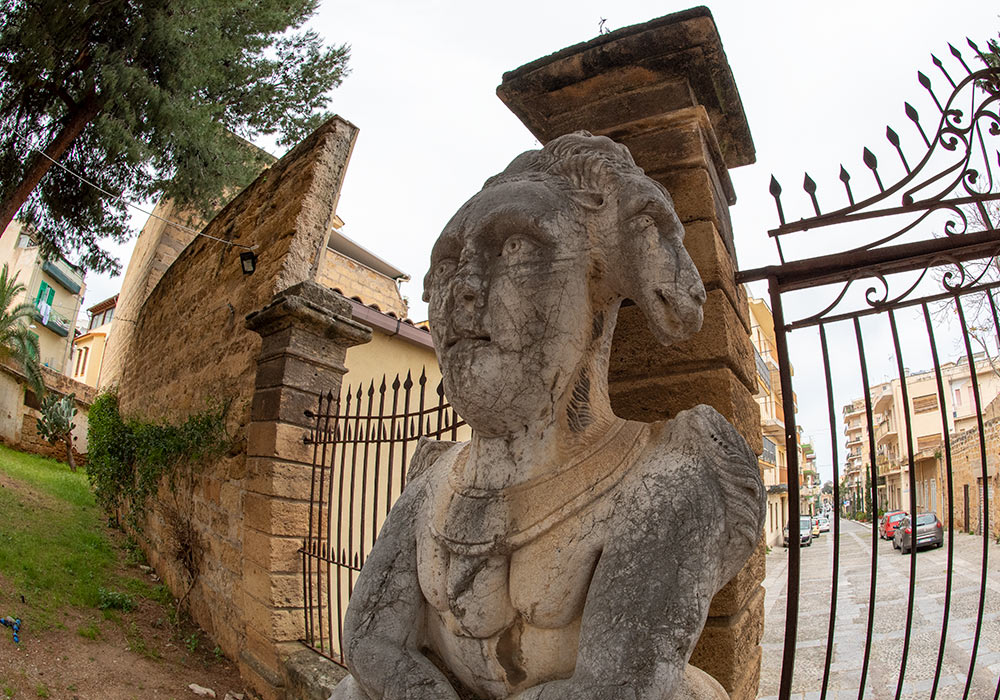
The main gate during the 18th century.
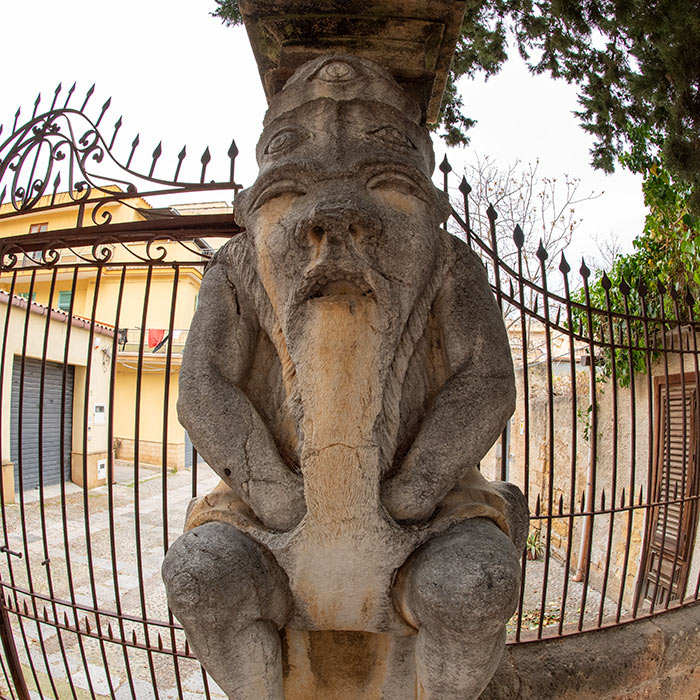
The second monster guarding the old main gate.
Homepage and Facebook page
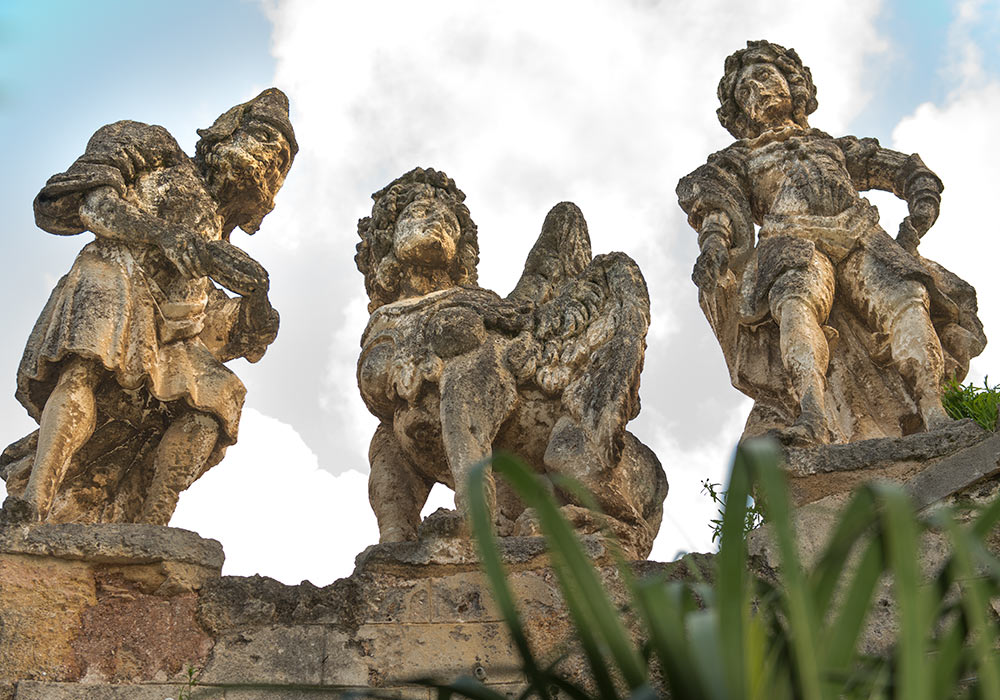
Statues on the wall surrounding Villa Palagonia.
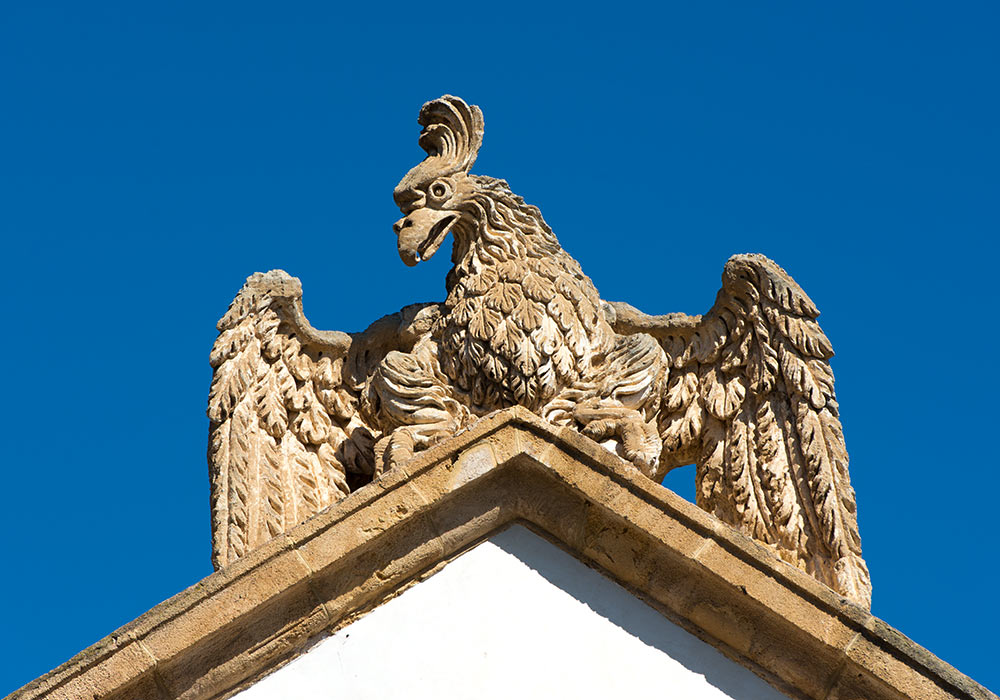
The eagle on the roof.
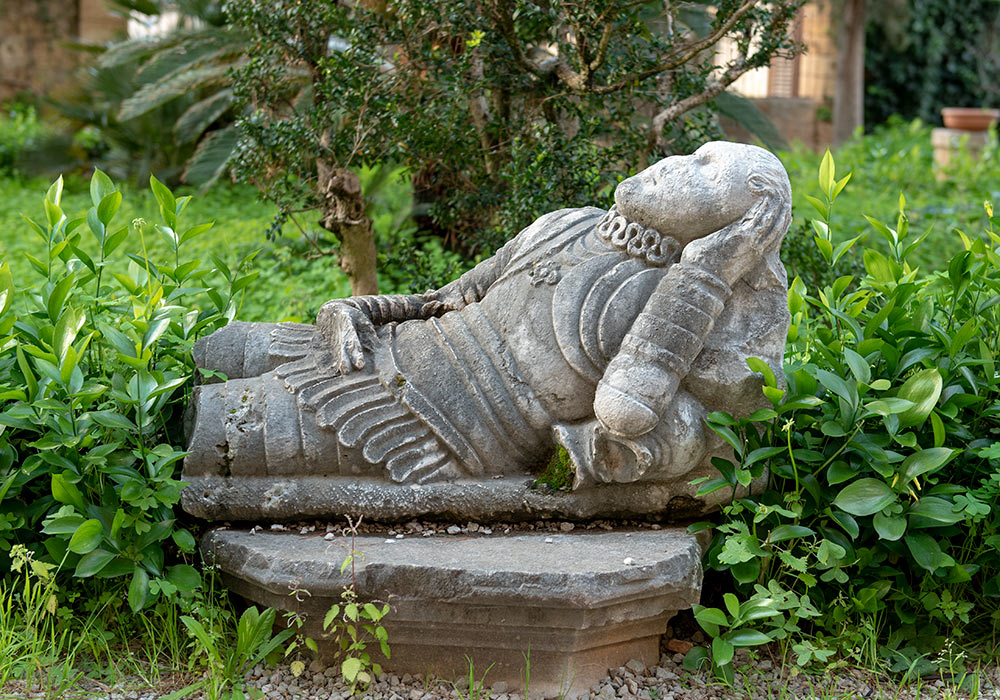
This is one of two reclining figures in the garden. They were probably part of the lid on a sarcophagus. See the sarcophagus for the nobleman Francesco Perdicaro (died in 1567) in the Norman church La Magione on the page about Death in Sicily. A sarcophagus is stored near the wall close to the original main gate, now on the back side of the villa.
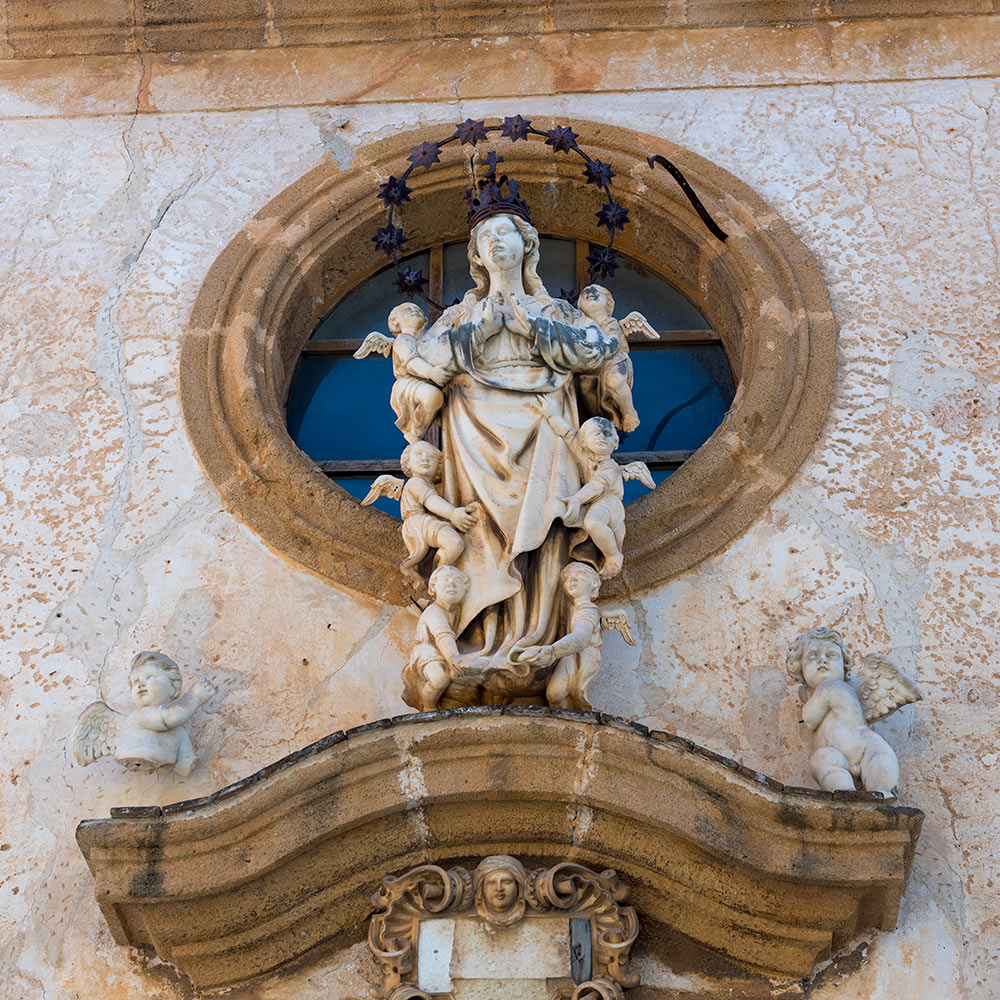
The Madonna outside the small curch in the garden.
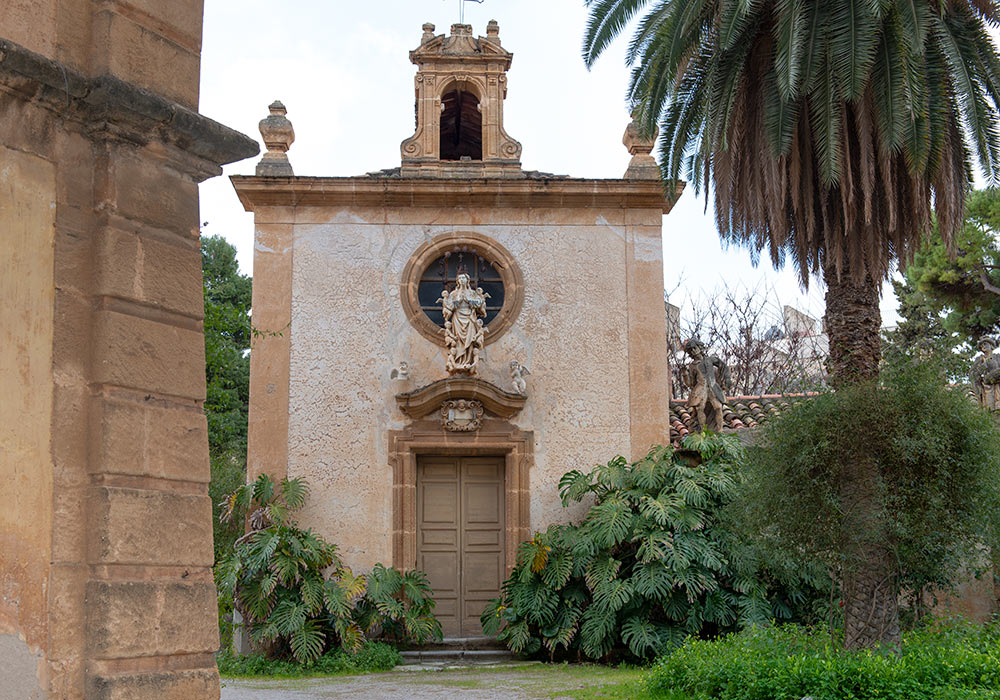
The small chapel in the garden og Villa Palagonia.
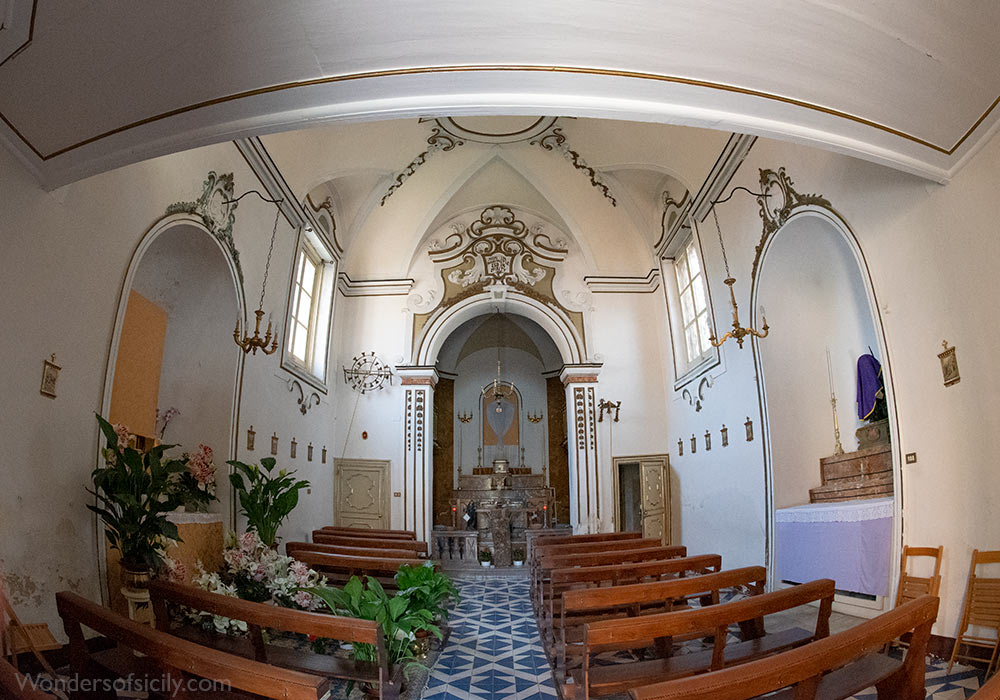
The interior of the small chapel, Villa Palagonia, Bagheria.
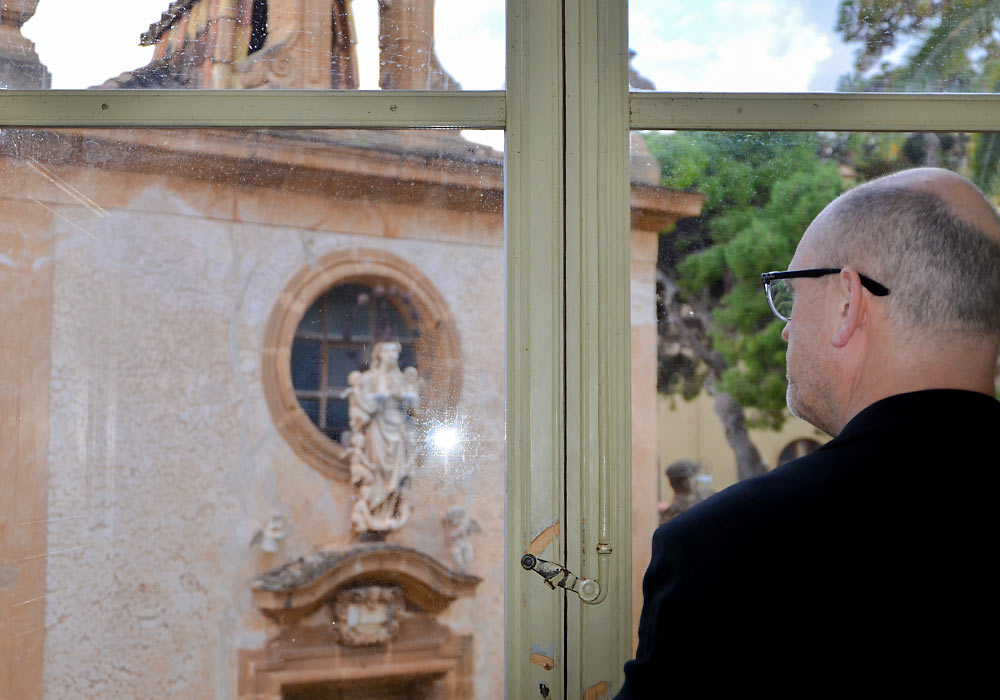
Photo: Kåre Bunlar Jacobsen
The coat of arms on the rear side of Villa Palagonia
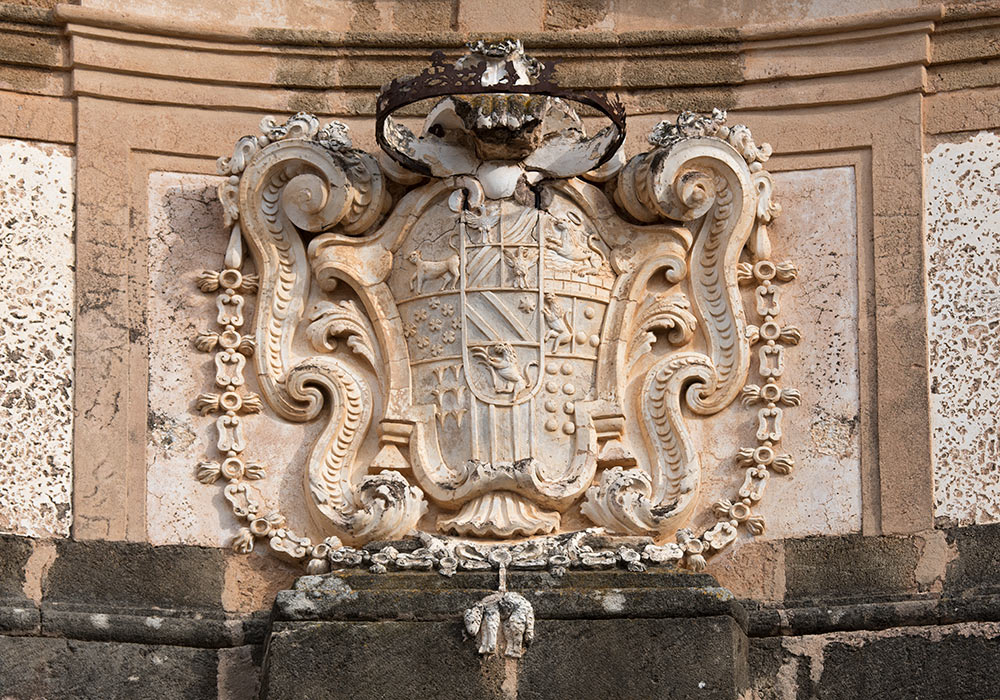
The coat of arms on the rear side of the villa.
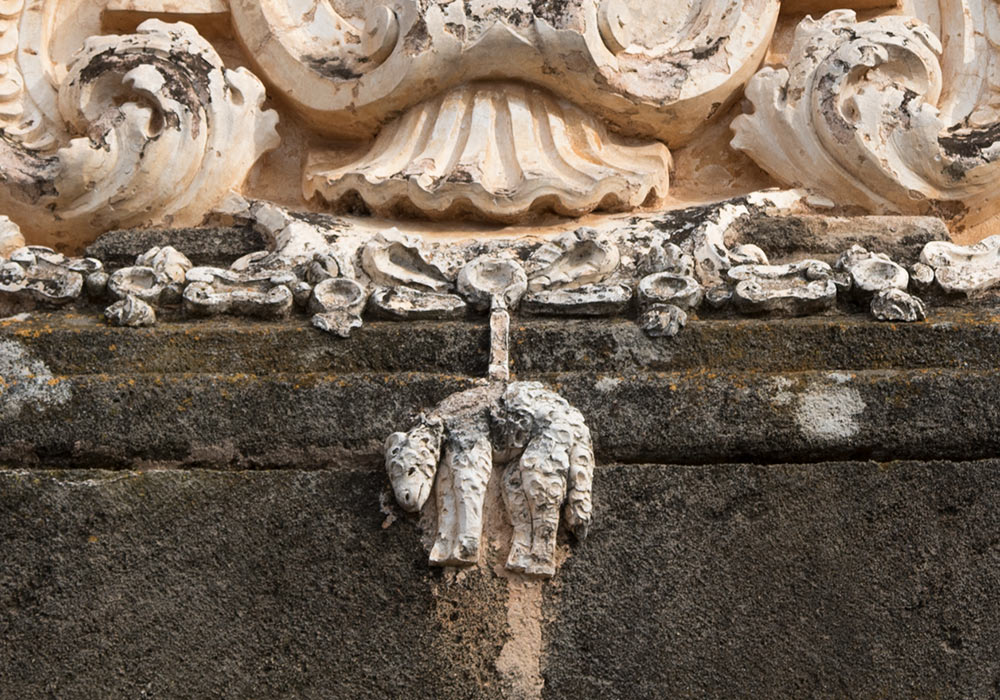
Detail of the coat of arms showing the Golden Fleece. In Greek mythology, the Golden Fleece is the fleece of the gold-haired winged ram, which was held in Colchis. It figures in the tale of the hero Jason and his crew of Argonauts, who set out on a quest for the fleece by order of King Pelias, in order to place Jason rightfully on the throne of Iolcus in Thessaly. Through the help of Medea, they acquire the Golden Fleece.
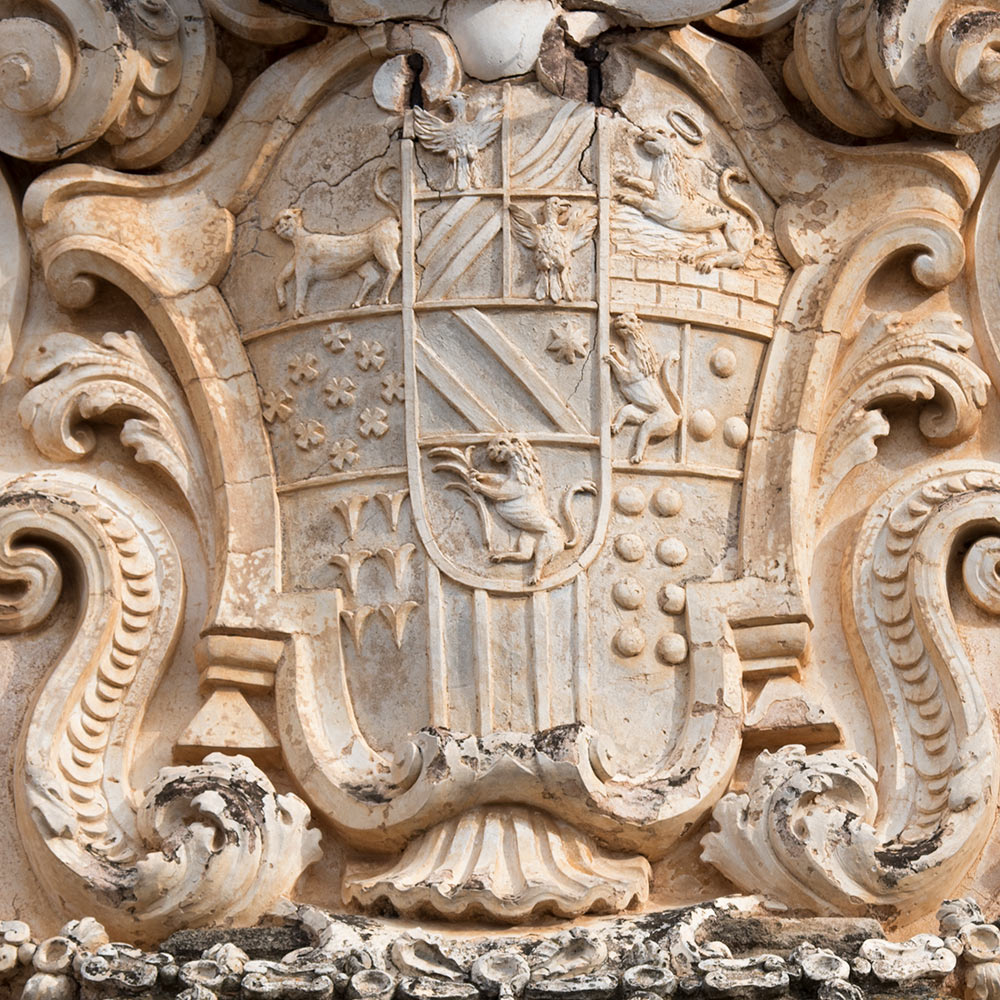
Detail of the coat of arms on the rear side of the villa.
Literature about the Sicilian Baroque and Villa Palagonia
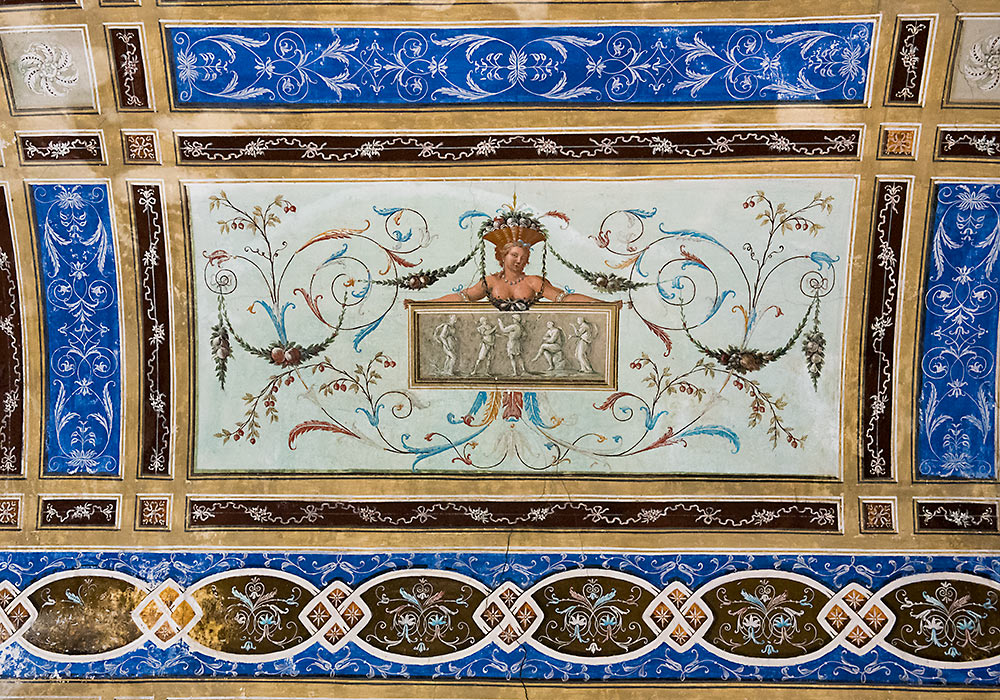
Painting on the ceiling.
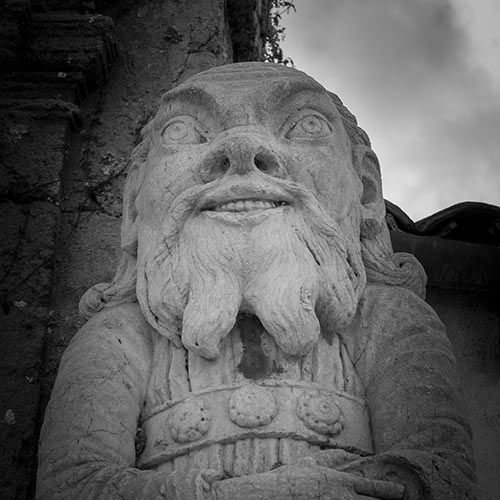
Photo: Per-Erik Skramstad / Wonders of Sicily
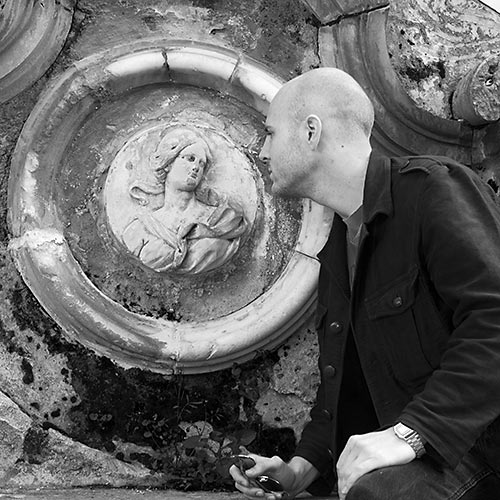
Photo: Per-Erik Skramstad / Wonders of Sicily
CLICK HERE to see more photos!
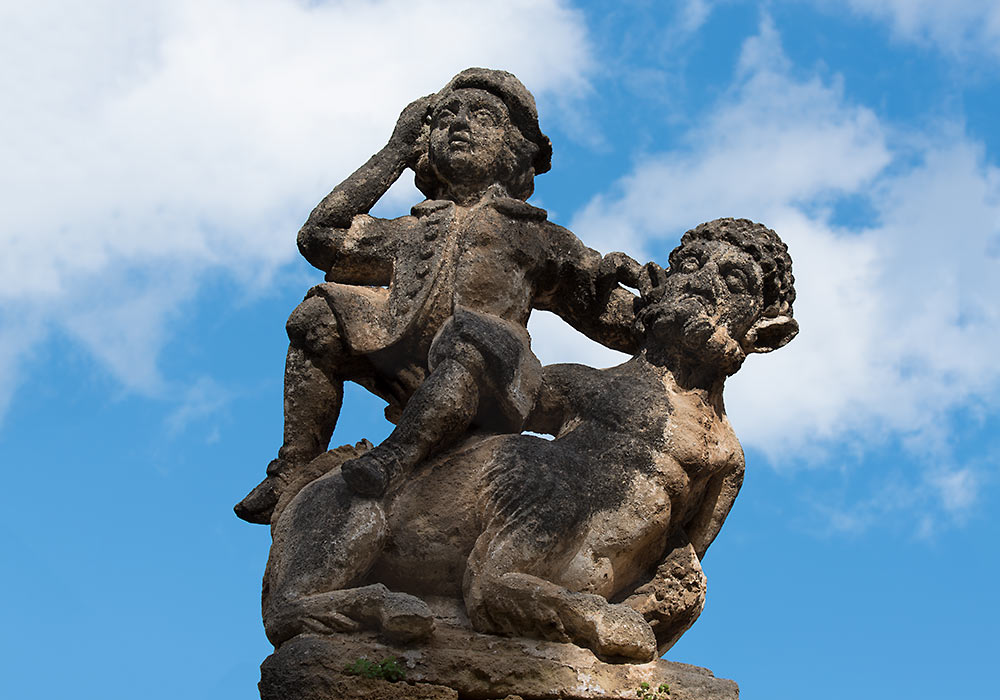
One of the many statues on the wall surrounding Villa Palagonia.
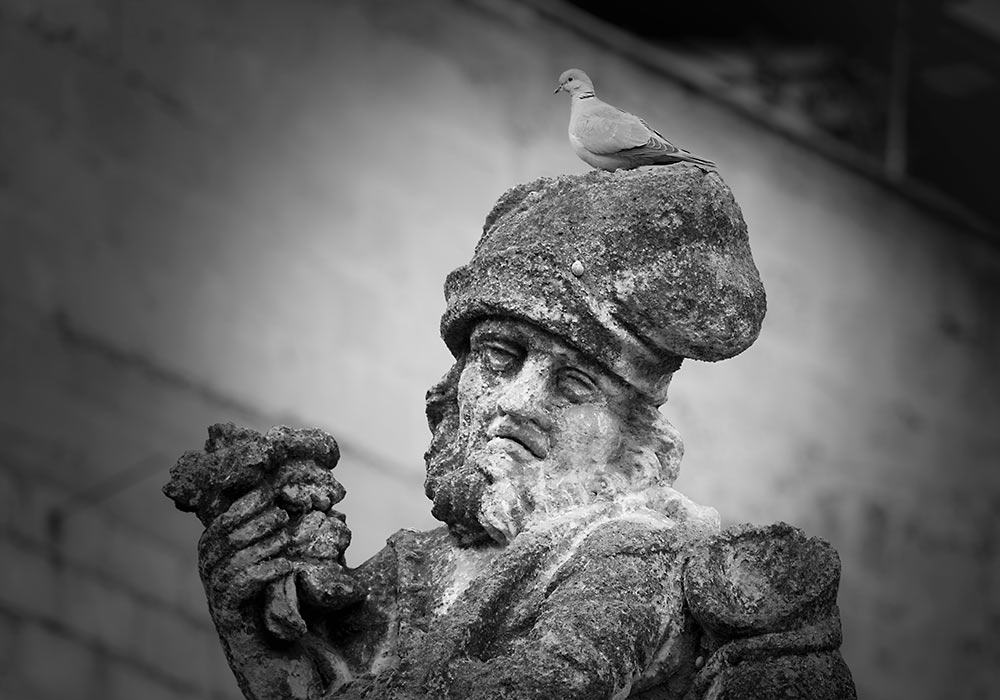
Statue on the wall.
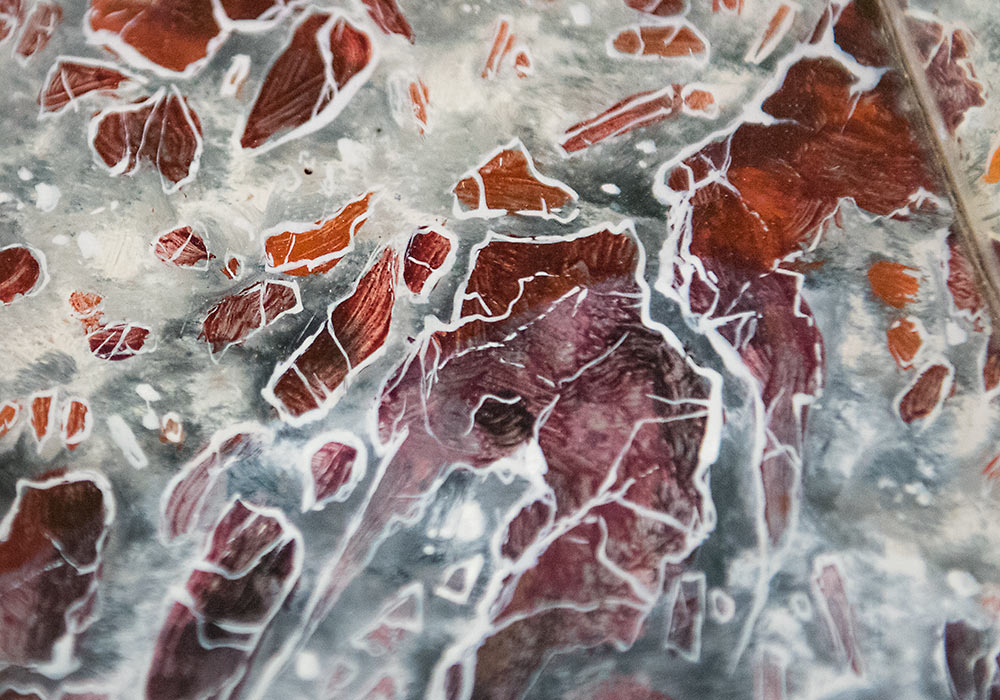
The "marble" walls in the Hall of Mirrors are actually only painted glass. (Detail.)
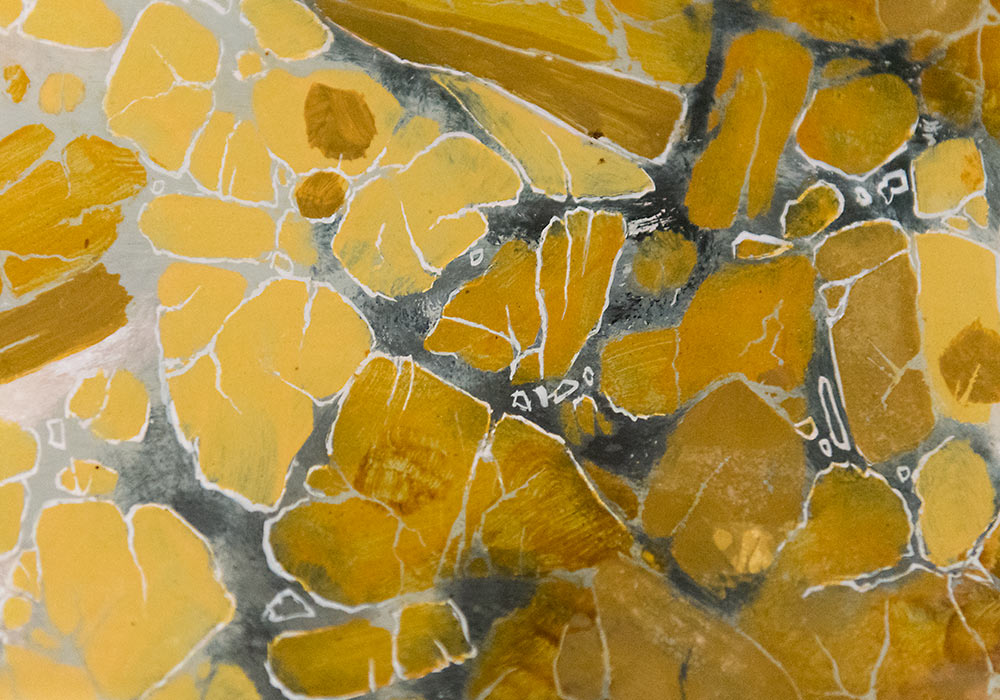
Painted glass looking like marble.
Sicily in the Movies
- The Godfather I-III (Francis Ford Coppola)
- L'avventura (Michelangelo Antonioni)
- Kaos (Paolo and Vittorio Taviani)
- Nuovo Cinema Paradiso (International title: Cinema Paradiso), (Giuseppe Tornatore)
- Baarìa (Giuseppe Tornatore)
- Malèna (Giuseppe Tornatore)
- The Star Maker (1995) "L'uomo delle stelle" (Giuseppe Tornatore)
- La terra trema (Luchino Visconti)
- The Big Blue (Luc Besson)
